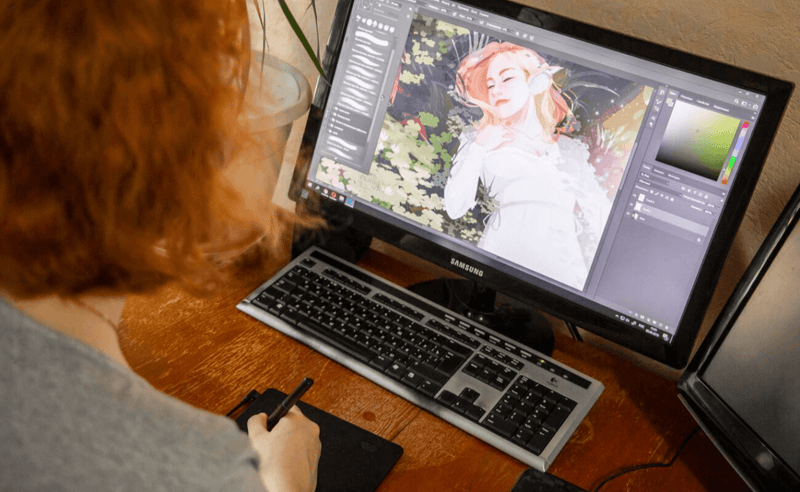
After regarded as a mere craft, far more and a lot more artists are creating textiles as a high-quality art medium, and consumers and collectors are responding with expanding enthusiasm as they glance to expand their artwork collections with textile art.
Along with the cave drawings from a lot of millennia back, textiles, in the sort of animal skins when appeared. Over the generations, textiles have turn out to be additional ornamental and functional with patterned throws, rugs and the occasional macrame or crocheted wall hanging.

Textile arts are arts and crafts that use plant, animal, or synthetic fibres to build practical or attractive objects. Many artists replicate on the present day world and its generation in their matter make any difference and textile artwork has a intriguing history – geographical and political – from buying and selling Tyrian purple dye in the ancient Mediterranean, via to The Silk Highway and the Industrial Revolution. But its background is normally constrained to luxurious materials and political unrest. Modern-day textile artists have begun to introduce the principle of fibre artists, getting rid of absent from references to textile craft and the catch-all expression ‘mixed media’.
‘You all know how great artwork can impact you, you breathe differently’.
One particular of the world’s most influential textile artists of the 20th century was Anni Albers (1899-1994) who did significantly of the ground function to transfer textiles absent from the earth of crafts and into the arena of the good arts. As a member of the influential Bauhaus, she turned to textiles right after getting refused entry to the portray workshop (due to the fact she was a female). Textiles was often observed as women’s do the job and Albers admits she imagined it was fairly sissy. But functioning less than, the maybe better regarded Paul Klee, she approached the discipline with an artist’s eye, investigating, experimenting and normally incorporating non-conventional components into her compositions – which includes, fairly curiously, cellophane.
In preserving with the philosophy of the Bauhaus, the German-dependent arts school aimed to reimagine the product environment to replicate the unity of all the arts, she deemed objective together with sort. The final result was straightforward styles or bold colors. She talked evocatively about the artwork of touch, the tactile sense that textile artwork can satisfy. Like quite a few textile artists, she turned to heritage for inspiration and credits the weavers of historical Peru as her greatest teachers.
In 1949, she turned the initially weaver to have a one particular-individual exhibit at the Museum of Modern day Art in New York the exhibition travelled to 26 venues all over the United States and Canada.

So what is textile art?
Usefulness, Alber tells us, does not preclude one thing getting artwork. “A function of artwork, we know, can be built of sand or sound, feathers or flowers as a lot as marble or gold,” she writes in her seminal text, On Weaving, which was released in the 1960s. But sensitivity and creativity renders a perform artwork rather than style and design no matter of the product.
Due to the fact then, textile art has the two grown up our walls, and is now using more than floors. Artisan rug makers are doing the job with artists to transfer artworks into textiles. Though artists them selves are choosing up looms and incorporating weaving into their observe.
Silk textile artist and artweb member Diane Rogers created her perform from her position as a industrial print textile designer. At first trained in style, she saw improvements in the marketplace to portray and embroidering style instantly onto fabric.
“A quilting system I was applying on a individual team of types, influenced me with its possibilities and I started to experiment with absolutely free machine embroidery and quilting to establish this process as a way of generating lifted fabric artwork pieces,” she clarifies. “Nature and the environment deliver the inspiration for my textile art and also my paintings. The gnarled, grainy texture of tree bark, carpets of loaded vibrant leaves, pebbles and structures on seashores, tangled nets and the ever switching rock swimming pools on the south coast are recurring themes. The neglect and decay of constructions, exposure to the natural aspects and the passage of time, expose intriguing surfaces, styles, textures and designs.”

Her method of hand painting and printing on to silks and introducing embroidery and embellishment as a result of a quilted layer creates texture and lifted regions in aid. “This offers a powerful, irresistible tactile high quality to each primary piece,” she suggests. “I sense there is a fascinating discord involving the smooth lustrous top quality and qualities of silk as a medium and my subject issue.”
Consumers of her do the job are large ranging, but she does get a good deal of curiosity from women of all ages who are eager on needlework and performing crafts. “Women customarily are more common with the procedures utilized and time taken to make textile artwork perform. Gentlemen, I locate, are fascinated with the element and effects that can be attained and are most appreciative of the time taken to make a piece.
“It is annoying textile artwork is frequently underneath-appreciated in the artwork world, nevertheless in The usa it is held in larger regard and there feel to be additional options and galleries keen to display textile art as wonderful art. Numerous open up submissions for art function or exhibitions exclude textile art as a class and work has to be submitted as mixed media.
“I basically use textiles and threads or fibres as a drawing, portray and sculpting substance. Hopefully, slowly and gradually textiles and fibre artwork is acquiring closer to becoming viewed as a high-quality art.”
You can see Diane Rogers’ perform on artweb.




